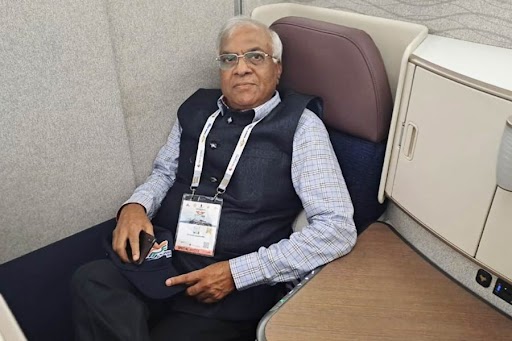 |
| File picture of a Naga couple |
Expressing serious concern over the way illegal Bangladeshi migrants were pouring into the country, the Supreme Court on February 26, 2001 said they were a threat to both the economy and the security of India. “They are eating into the economy of the country and to a large extent are a security threat,” a three-judge bench had said. While the impact of Bangladeshi migration into states like Assam and Tripura have been comparatively well documented, the same is not true in the case of states like Nagaland. The latter has been experiencing largescale immigration of illegal Bangladeshis, which is a matter of concern for policy planners and the general public. Today, they pose one of the most serious threats to this beautiful state and its socio-cultural identity.
Though the exact figure of such illegal immigrants is not available, it is estimated that their number runs into several lakhs and is increasing alarmingly. Dimapur area alone is estimated to have over two lakh Bangladeshis. The state population as per the 2001 census has shown a jump from 56.08 per cent in 1981-1991 to 64.41 per cent between 1991 and 2001. This phenomenal increase is attributed mainly to the illegal influx. Interestingly, all this is happening when the state is supposed to be protected through an “inner-line permit system”, which restricts access of outsiders to most parts of the state. Outsiders are also barred from purchasing land, except in Dimapur, the commercial hub of the state. The illegal Bangladeshi immigrants are said to be entering Nagaland mainly from Assam’s Karimganj border and settling in Dimapur. Dimapur is not covered under the ILP system. The cosmopolitan nature of Dimapur town makes detection and subsequent deportation a highly difficult exercise.
As a result, the influx has assumed menacing proportions in the Niuland area of Dimapur district. The illegal migrants have a significant presence in other towns as well, specifically in the plains adjoining Dimapur and some other districts bordering Assam. They are employed to work in the fields, at home, or as rickshawpullers, manual labourers and in other establishments. Many of them are suspected to have acquired land and other immovable properties. Unfortunately, the local population has also patronised them by providing land for settlement and cultivation. Contractors and businessmen engage them in various construction work and other activities as they provide cheap labour. The Doyang hydroelectric project in Wokha district had given employment to a large number of such immigrants. Unfortunately, many of them do not go back.
It is also reported that the immigrants often try to marry local girls to secure social sanction for their stay in the state. The Naga Students’ Federation (NSF), the vocal student body expressing concern about the situation, imposed restrictions on Naga girls marrying illegal immigrants from Bangladesh and such girls who marry outsiders should not be allowed to acquire property in the state.
Talking to the media recently, an NSF leader said it has already imposed a ban on Naga girls marrying illegal migrants from Bangladesh. But he admitted that the ban could not be strictly imposed. As a result of such illegal migration and their nuptial ties with the local populace, a new community called Semiya or Sumias has already emerged in the state. Their number is estimated to be several thousand. The concentration of the Semiyas is the highest in Dimapur and Kohima districts respectively. There are fears among many that the voters’ list might have been doctored to accommodate the Semiyas as well other immigrants. The result of such immigration is gradually being felt in the state.
According to a Dimapur-based newspaper, on any Muslim religious day at least half of the shops in Kohima and some 75 per cent in Dimapur remain closed. It is also a fact that control over business establishments is fast receding from the hands of the locals. A recent survey conducted by the state directorate of Agriculture showed that 71.73 per cent of the total business establishments are being controlled and run by non-locals. Out of the 23,777 numbers of shops in the state, the local people own only 6,722 shops. Since the illegal migrants provide cheap labour, they are aggravating the unemployment problem. Besides, they pose a threat to the internal security as well. Reliable sources indicate that they are also involved in various unwanted activities like drug peddling and flesh trade.
In a bid to check influx of illegal immigrations in Nagaland, the militant outfit, National Socialist Council of Nagaland (Khaplang) has reportedly introduced a regulatory system called the Temporary Resident Permit (TRP) to Bangladeshi nationals. The new system is an effort to promote and safeguard future Naga generations. Under the new system, the number of these migrants would be restricted to 2,500 in each district in the state, while the TRP would be renewed annually. It has also banned landowners of terraced fields and gardens from employing more than one such labourer per household for temporary cultivation.
During a meeting of the chief ministers of the Northeastern states in Shillong in February 2000, the then chief minister of Nagaland S.C. Jamir had warned, “Unless steps are taken to prevent the entry of people of dubious nationality into our state, Nagaland may face the same problem as that of Assam… They have captured a large part of Assam, they can do the same with Nagaland”. It is reported that during 1994-1997 more than 20,000 foreign nationals were deported from the state. Unfortunately, many of them have reportedly come back. Nagaland has time and again expressed its helplessness in arresting the phenomenon unless it receives co-operation from states like Assam. Unless there is a co-ordination among the neighbouring states, particularly Assam, it is very difficult to identify and deport foreign nationals. However, many underline the need for introspection among the Nagas who employ the Bangladeshis. There have been suggestions from the Naga organisations to prevent such employment.
The Centre, which appears to be realising the threat of such illegal migration into other parts of the country, has a definite role to play in protecting Nagaland. Top priority should be given to effective border management and strict policing. Such steps, even though an expensive affair, would go a long way in securing the national interest in the long run. The Nagas, too, need to wake up to the urgency of the situation and prevent their state from turning into a Tripura. It needs an invigorated effort no doubt. It is, therefore, the need of the hour for policy planners, politicians, the student community, public leaders and the general public to co-operate and unite to fight the menace of illegal immigration, before the situation turns from bad to worse. There is no easy solution to the illegal migration crisis.











